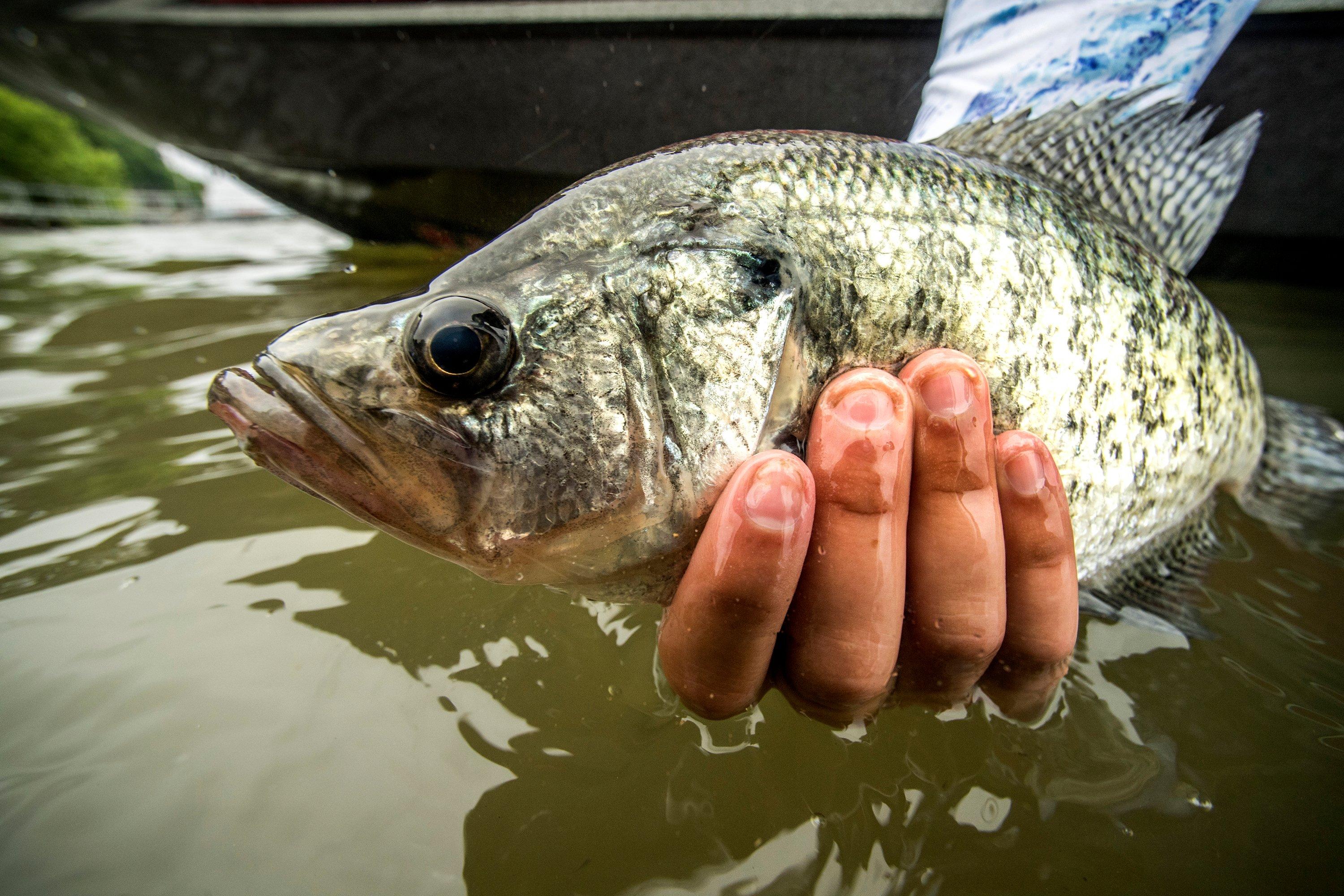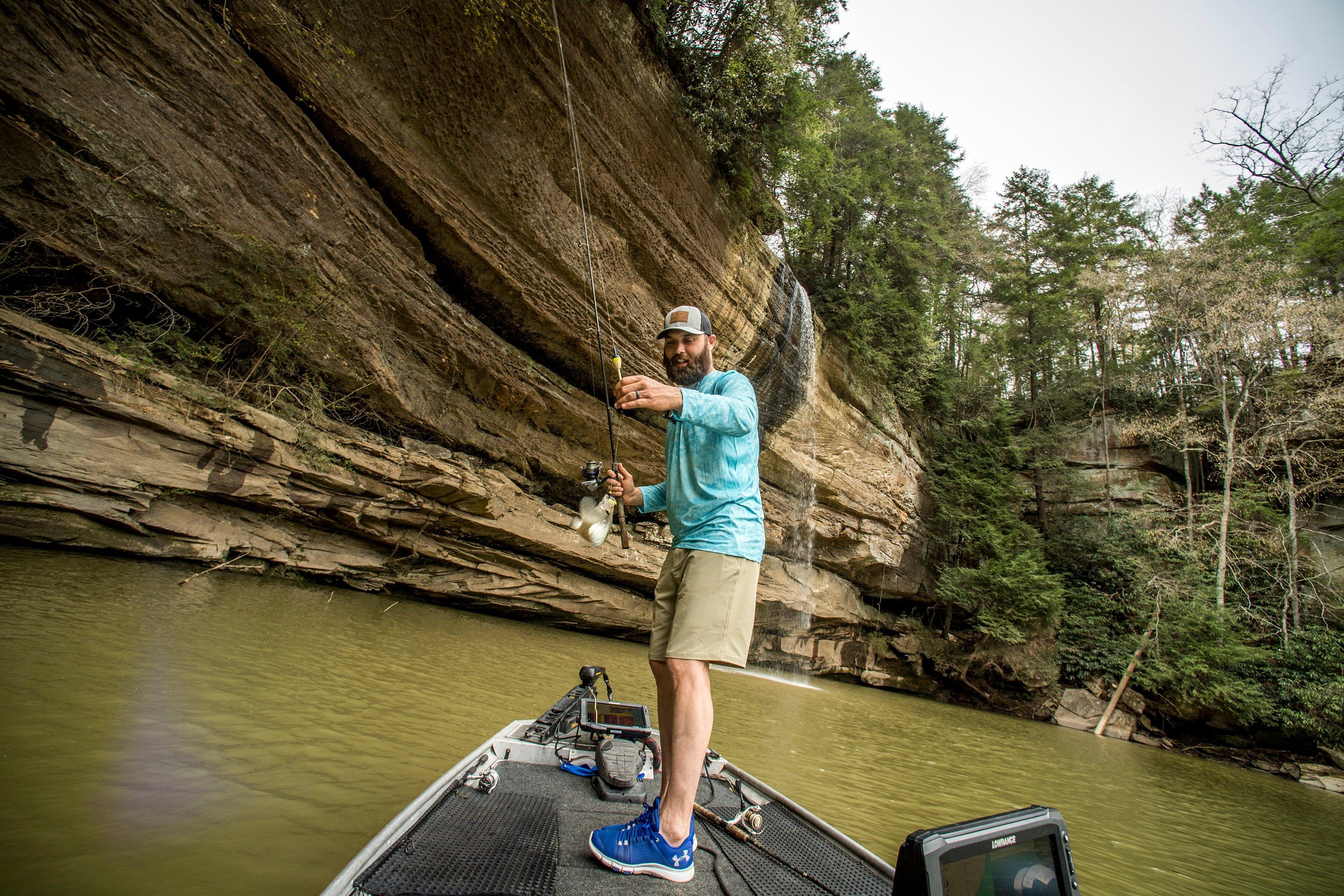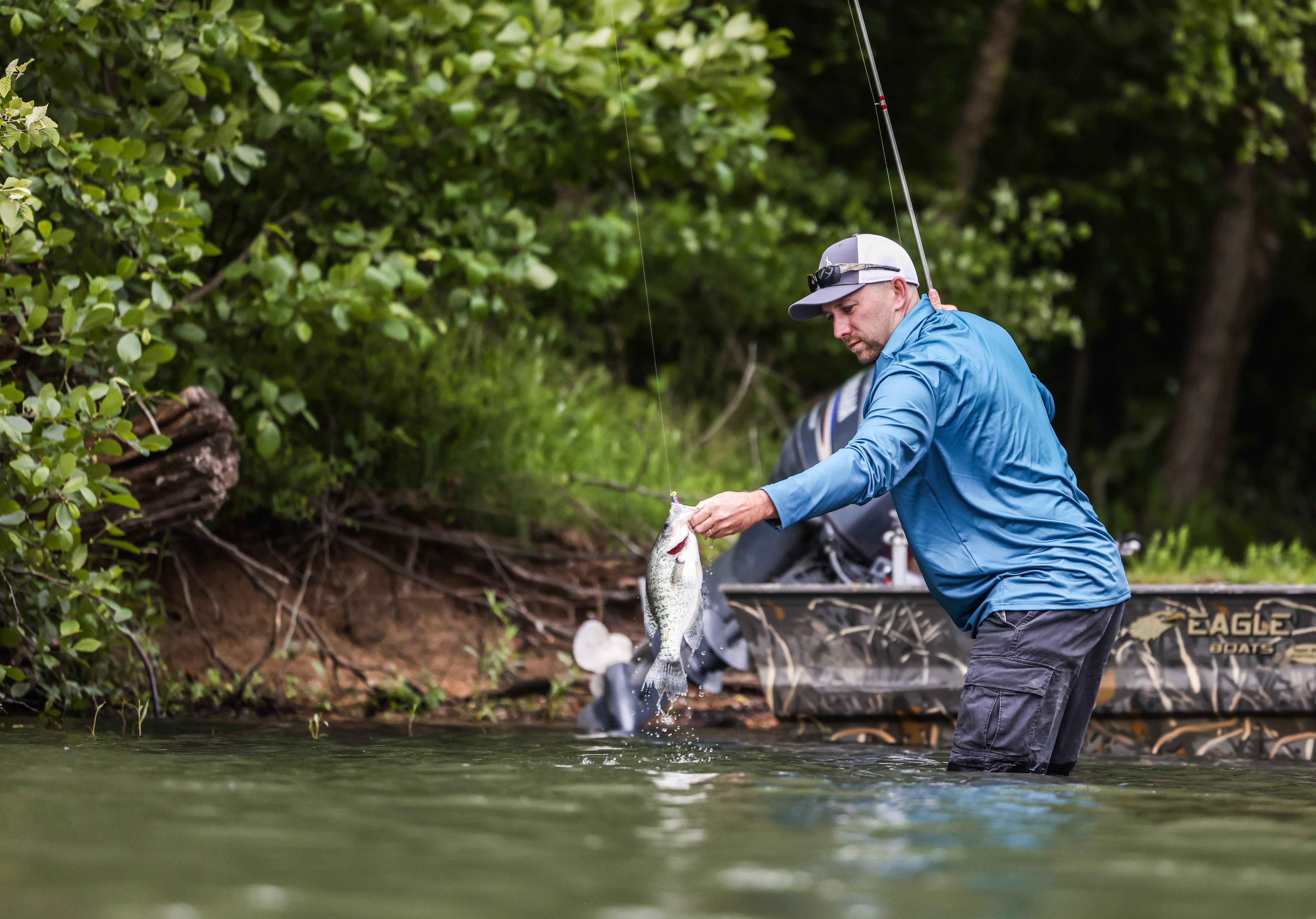These simple tactics will help put slabs in your boat, even if you don’t have thousands of dollars’ worth of electronics

You don’t need thousands of dollars’ worth of electronics to catch crappie.
As the sun set on Florida’s St. John’s River, I reflected on another great evening on the water. The wind had hampered my efforts a bit, but I still was able to round up a handful of big black crappies for the cleaning table. The St. John’s is truly a world-class crappie fishery, with 2-pound fish being common and serious numbers moving shallow each winter to spawn.
I’ve spent a lot of hours there, developing a system of pulling slabs from heavy cover in shallow water. It’s long-pole fishing, and a combination of old-school tactics with modern twists that delivers the same thrill from the thump on the line that got me started as a youngster.
There’s something about poking around cover, for any type of fish, that just does it for me. I’d much rather read water than stare at a sonar screen. Most days, in fact, I never even turn on a depth finder when I’m crappie fishing.
To be fair, I live and fish in a unique part of the world. Florida has shallow habitat nearly everywhere. But I can’t help but reflect back to similar tactics I used when fishing other places.
There were the big slabbers of Kentucky Lake, which were suckers for small crankbaits and spinnerbaits slow rolled along rip-rap banks. Before that, my childhood was built on the crappie community of western New York, where anglers looked for “calico bass” soaking up springtime sun in the shallow weedy coves. There, slip bobbers and jigs did the trick.
In my 20s, I’d pester the crappies of the Midwest on various reservoirs, armed with nothing but a little twister tail. Having the right rod was imperative because I needed to be able to make short skip-casts under docks, or throw a 1/16-ounce jig against the wind. This was just like bass fishing, but with the added benefit of tasty fish for the table, making it right up my alley.
Really, most of my crappie fishing has been pretty simple. What a stark contrast to the techno-angling I witness lately. To be a serious crappie fisherman today, it seems, requires a $10,000 electronics package and a total disregard for shallow water. For the most part, tournament crappie anglers, and many serious recreational anglers, now rely on depth-finders for their daily fishing. It’s hard to blame them. Forward-Facing sonar, able to view fish a cast away and nearly guarantee your lure runs by a crappie, seems to make it easy.
But is it necessary to be successful? The simple answer is “no.”
While high-tech sonar is certainly an asset at certain times of year, crappies can be caught without it pretty often, too. If you miss the days of jumping in the John boat with a couple rods and coming back with dinner, follow these simple guidelines to get back on track.
1. Find Cold-Water Slabs
In most of the North, crappies are the first panfish to move to shallow water each spring. Before the bluegills and bass, black (and a few white) crappies will begin their migration toward spawning areas, taking up refuge in weedy bays, marinas filled with boat docks, or the steep banks of brushy creeks. Look for areas where the fish can move vertically in the water column — up and down with the warming sun — and still remain around abundant cover. Often, when the sun is highest, you’ll see the fish holding around objects (note: black, floating “jet ski” docks are prime).
Here, there’s no better bait than a jig and minnow. While I shy away from live bait during the other 95% of the season, minnows simply catch crappies best in ultra-cold water. Often, we’re talking water temps in the low 40s; the fish simply need extra time to study your offering, and a wiggly minnow seals the deal. Place it below a slip float and fish fairly high in the water column, relative to the depth. Pitch tight to objects, give it a few seconds, and move on. Once you find a productive area, it’s common to catch multiple fish. For best results, sleep in and fish afternoons.

Early season fish often hold tight to steep banks. Try a jig and minnow. Image by Bill Konway
2. Shallow as You Dare
Early last week, I caught a dozen crappies fishing around thick vegetation in 18 inches of water. The fish were there feeding on baitfish that were there feeding on insects, I presume. The water temperature was 83 degrees; the crappies have been done spawning for weeks now. Still, the shallows kept their draw thanks to the food supply.
I see this all the time: A productive, shallow-water zone loved by crappies but ignored by fishermen. In spring, anglers often flood the bank with the fish, but immediately vacate once the spawn winds down. But the crappies don’t.
If food is available, crappies will stay shallow well into the warm-water season. In my locale, the food is Gambia, small minnows often called “pot bellies” or “mosquito fish.” They hatch in big numbers in late spring, offering crappies an easy meal. Look for lots of splashing and thrashing around weed mats to clue you in.
Shad spawn this time of year, too. It’s a known pattern for bass fishermen, but don’t think for a minute that big crappies don’t take part in the action. A nice slab will take down a 3-inch threadfin, no problem. Look for shad spawns occurring around sea walls and boat docks early in the morning. Fish those areas with traditional crappie cranks and plastics. There are big numbers of fish around those docks; they just often stay in the background when the bass are working the bait.
3. Vertical 2-D
OK, a depth finder does help for this tactic, but any decent, inexpensive one will work fine, even on a traditional 2D setting. My depth finders rarely see power when I’m crappie fishing, but when they do, it’s because I’m fishing vertically. This is a technique I’ve used for years, all across the country, to regularly take summertime slabs.
As more crappies move to main-lake areas, they set up shop around deep cover. Brush piles, of course, are primo. Laydown trees on channel banks can be just as good, and big docks are a regular stop. Deep weedbeds are productive on clear-water lakes.
In any case, we’re talking 10 feet of water in stained reservoirs, and as much as 30 in northern lakes. Areas with cover in and around the main basin of your fishery.
Position your boat directly overhead. This is key, as it allows vertical fishing around and into that cover. Your lure must be able to get down and come back through the same opening, without draping over limbs or posts. This is perfectly vertical fishing.
Any decent depth finder will help out, and the traditional 2-D setting is all that’s needed. A bit of skill with boat positioning is the most important part, so be sure to have a capable trolling motor. With it, position directly over your target — even if that means getting up against a dock piling — and drop a jig and plastic straight down. Start with a 1/16-ounce ball head and shad-style tail, and fish only as deep as the top of the cover for starters. Holding that little, quivering bait in the upper reaches of timber will get you bit. Drop down in and amongst — even in weedbeds — to coax fish from all levels. If it’s windy or current is prevalent, making it hard to stay vertical, up your jig to a 1/8 size. Use bright lines to watch for bites.

Wade-fishing allows you to approach shallow cover with the ultimate stealth. Image by Realtree Media
4. Wade Fishing
Disclaimer: In order to avoid becoming a meal for a large predatory reptile, I don’t wade fish for crappies in Florida. But I did a few times in Ohio, and it was blast.
Where possible, wade fishing for shallow slabs is one of the most fun forms of fishing you’ll ever experience. Armed with a long pole, dipping around cypress knees and willow bushes puts your bait in the strike zone 100% of the time. It’s both incredibly basic and productive, placing an angler in the elements like no other form of fishing.
Here, many anglers tote a floating minnow bucket, but it’s really not necessary. But be sure to carry a decent supply of jigs and plastics (it’s surprising how often you break off, despite being right there in the action). Spool up with light braided line to battle the brush. From there, it’s just a matter of covering ground until a productive cove or backwater is found. Savvy anglers will hop from spot to spot in a kicker-boat, simply tying up to a tree and hopping out. Decent catfish are often a bonus when fishing around heavy wood cover in spring, and help add to the fish fry.
Crappie fishing, like just about any form of outdoor pursuits, can be taken to whatever level you want. If sparkly boats and high-tech sonar is your thing, you’re likely uncovering new ways of fishing all the time. But if you long for a simpler experience, have no fear. It’s never necessary to spend a fortune in order to catch fish in freshwater. Crappies are a perfect example. As others find success staring at a sonar screen, I routinely leave mine off, and still go home ahead.
(Don’t Miss: 30 TIPS FOR EARLY SPRING FISHING)










